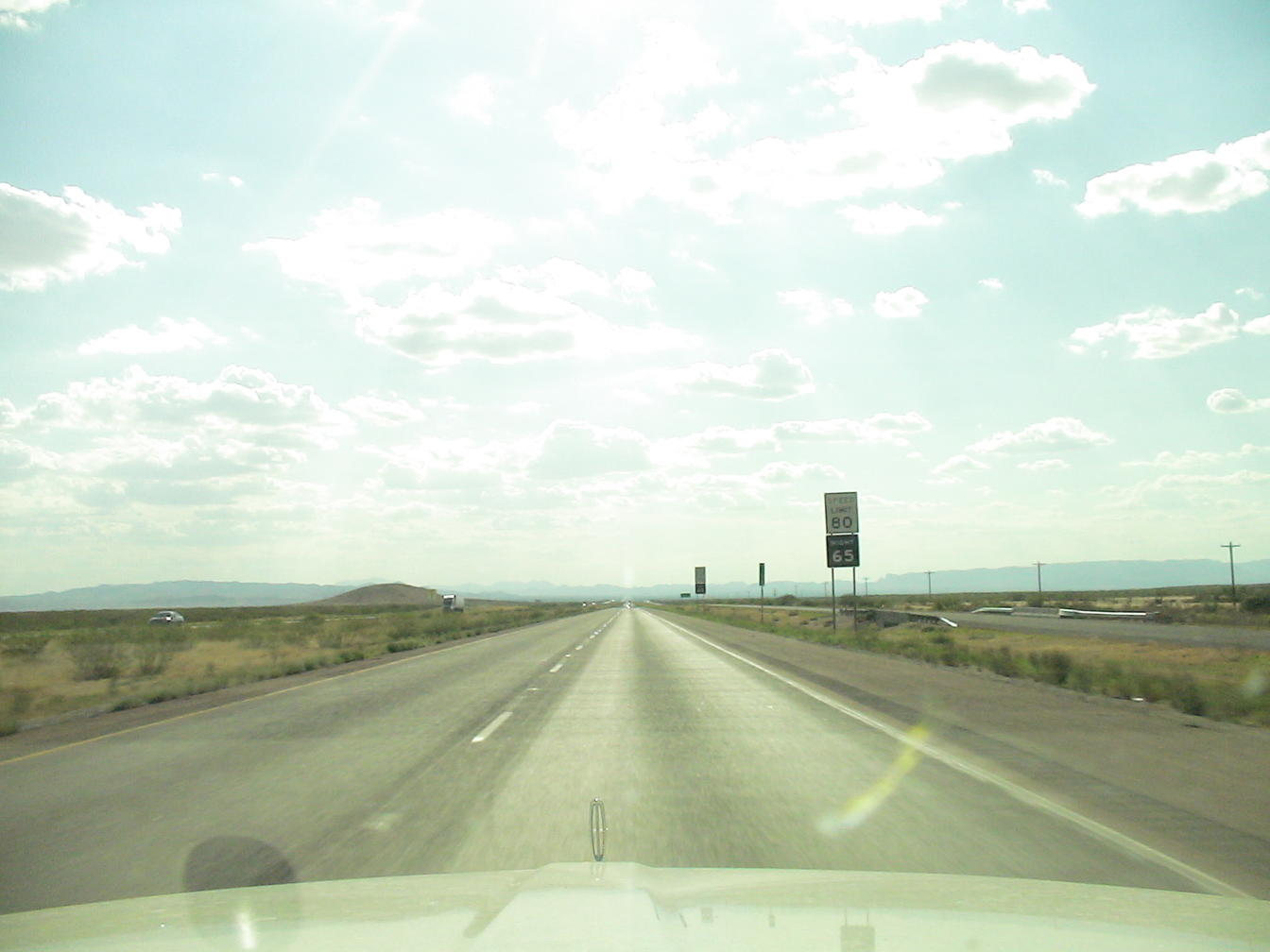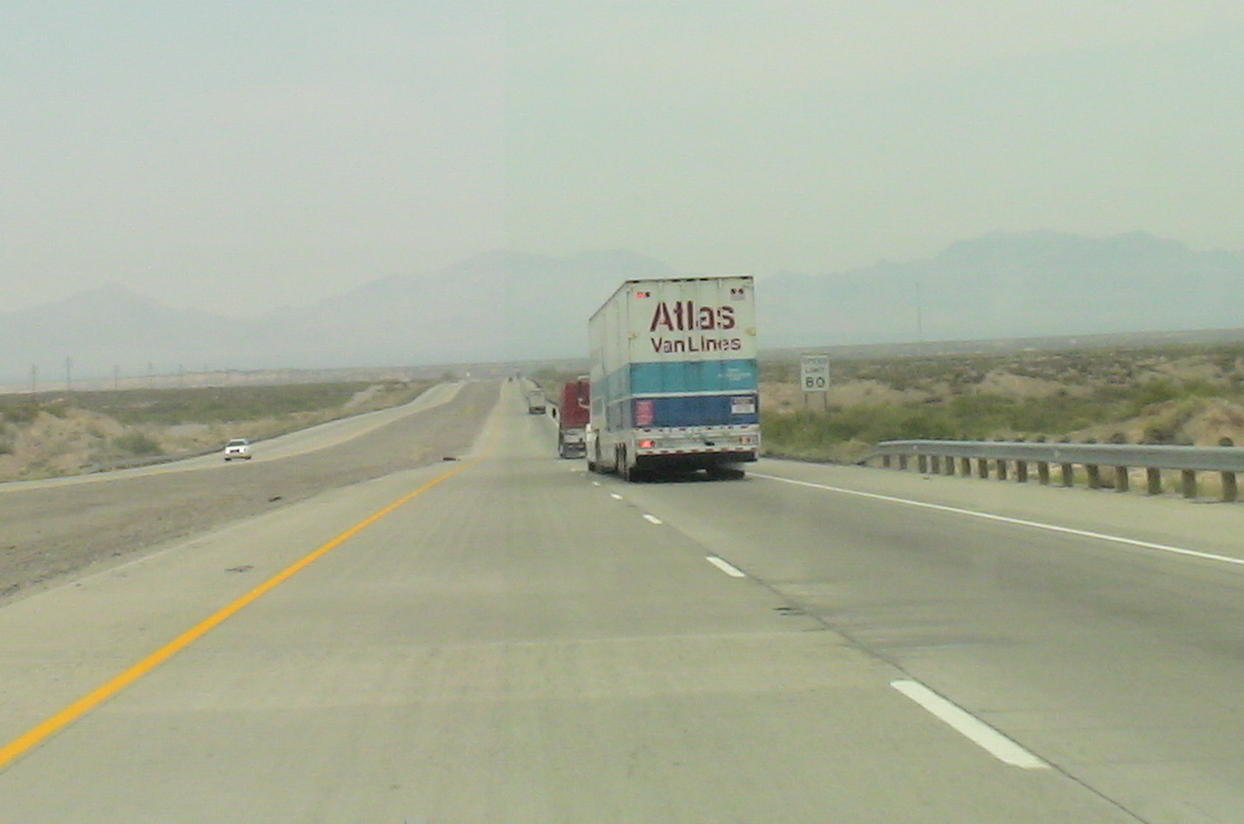Speed—and safety—winning over the traffic ticket lottery

When Texas first increased their speed limits to 80 on long stretches, they dropped them down to 65 at night.
My girlfriend and I just finished a road trip through thirteen states with nearly as many speed limit schemes. And in all of them, fifty-five as a standard limit on the highway is pretty much dead. Most states appear to go at least as high as seventy. That’s good. The 55 limit was rarely observed unless a cop was nearby or your grandma was at the wheel, and often not even then, and it made our roads more dangerous.
One other thing I noticed, however, is that throughout most of our trip the highway speed limit that garnered the most compliance was 70 mph. Where the speed limit was 55, people drove 65 to 80. Where the speed limit was 651, people drove 65-75. Where the speed limit was 70, people drove 68-75.
Except in Texas, where 75 means people drive 70-75. Eighty means 70-80, and 65 means 60-70. I expect this is because we assume that, since speed limits are set to 802 when appropriate, the 75, 70, and 65 limits are also appropriate rather than arbitrary.
Even the rare 55 zones get higher compliance in Texas, in my experience, than in other states. When we hit New York, I instinctively dropped to 55-60 when we hit a 55 mph highway, until I started getting almost rear-ended by New Yorkers going 75-80. I slowed down because my experience in Texas is that the safe speed limit is usually near the posted speed limit. I was quickly disabused of that notion while driving from Chatham to Ithaca.

Texas’s speed limits make it a lot easier for us Californians to come to the Lone Star State… quickly.
Research backs up my personal experience over the last several weeks: drivers do not automatically drive over the speed limit by the same amount when speed limits are increased; drivers tend to drive the safe speed for the road and conditions, and continue doing so when the speed limit changes, whether up or down. The main effect of a speed limit increase is to allow law enforcement to focus on those few drivers who do not drive safely.
We have the National Motorists Association to thank for fighting the inane 55 mile per hour national limit. They kept on congress and the states to pay attention to real-world research when most people thought 55 was here to stay. Without the NMA, our six-week road trip would have meant a lot more time on more dangerous roads and a lot less time enjoying our destinations!
Speed limits of 60 seem to be rare, except approaching construction zones.
↑Texas 130 has an 85 mph limit, but it’s a toll road to San Antonio and I have not driven it yet.
↑
- Driver Speed Behavior on U.S. Streets and Highways: Samuel C. Tignor, Ph.D. and Davey Warren
- “Many current speed limits coincide with 30-percentile speed, which is near the lower bound of safe travel speed. Speed limits should be set in the 70-to-90-percentile range or roughly 5 to 10 mph above the average speed to correctly reflect maximum safe speed… Raising the speed by various amounts up to 15 mph has little or no effect on speeds over a broad range of road types and speed levels.”
- The Effects of Raising and Lowering the Speed Limit at National Motorists Association
- “The objectives of this research was to determine the effects of raising and lowering posted speed limits on driver behavior for urban and rural nonlimited access highways. Sites selected for study were furnished by the participating States. The study was conducted during the period from October 1985 to September 1992, when the maximum speed limit was 55 mi/h (89 km/h) on nonlimited access highways.”
- National Motorists Association
- “The National Motorists Association is a membership organization devoted to representing and protecting the rights and interests of North American motorists. Member services include assistance with traffic tickets, information on traffic laws, plus guidance and aid for local and state legislative projects.”
- Safety & Setting Speed Limits: Charles E. Dornsife at National Motorists Association
- “After 25 years of enormous cost to the nation, NHTSA created an Urban Myth that equated lower speed limits with safety. The evidence at every stage of the process was indicating neither speed limits, nor that enforcement had any meaningful effect on traffic speeds and accident rates.”
More speeding laws
- A one-hundred-percent rule for traffic laws
- Laws should be set at the point at which we are willing and able to jail 100% of offenders. We should not make laws we are unwilling to enforce, nor where we encourage lawbreaking.
- Round Rock extends dangerously low speed limits on Highway 79?
- Are accidents along Highway 79 in Round Rock the result of speed limits that are too high, or are they the result of speed limits too far below the 85th percentile?
More traffic laws
- A one-hundred-percent rule for traffic laws
- Laws should be set at the point at which we are willing and able to jail 100% of offenders. We should not make laws we are unwilling to enforce, nor where we encourage lawbreaking.
- Bad laws cause crime
- “Honestly, the level of apathy I’m dealing with is maddening.” Bad laws make it easy to get away with breaking them.
- Speeding and budgets: Conflict of Interest
- Obviously, the money generated by speed laws creates a conflict of interest for state lawmakers, who will need more “lawbreakers” in order to meet budget numbers. But the conflict of interest doesn’t always stop there.
- Driving laws too complicated for DMV
- It appears that California’s driving laws are so complicated that even the DMV and the California Highway Patrol get confused.
- Targeting critics of the law
- When Canadian journalist Kerry Diotte criticized red light cameras in Edmonton, Edmonton police started looking for a reason to arrest him.
- Four more pages with the topic traffic laws, and other related pages
